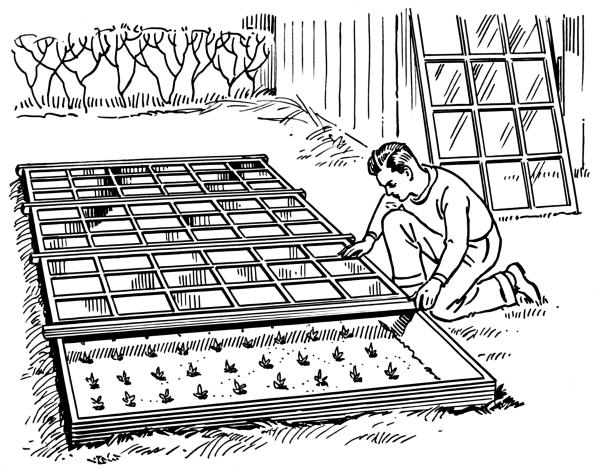COLUMBIA, Mo. – February played a dirty trick when winter storms dumped a lot of snow on the ground. Green-thumb enthusiasts hoping for an early start on their gardens had to wait for a thaw. But there are ways to help hasten the arrival of the gardening season even when the weather isn’t cooperating.
Cold frames and hotbeds are great for starting cool-season plants such as lettuce and spinach, says David Trinklein, horticulture specialist for University of Missouri Extension. They also let you harden off seedlings you started indoors.
“Cold frames take advantage of solar heat for warmth. Hotbeds use a heat source, usually electric heating cables,” Trinklein said.
Site selection
Both cold frames and hotbeds rely on solar radiation, so they should have a southern exposure to maximize sunlight. It is also important that the site have good natural drainage.
“If the cold frame is dug into the ground, good drainage will keep water from accumulating,” Trinklein said. “You can improve drainage by using a perforated plastic drainage pipe placed under a thick layer of gravel or sand.”
Construction
You can buy a cold frame kit, or build your own using lumber, concrete block or even straw bales to create the rectangular frame.
“The side walls should be between 8 and 16 inches high and covered with glazing material such as glass, fiberglass, polycarbonate or plastic film,” Trinklein said. “The finished rectangular frame can be as big or as small as needed, depending on materials and funds available for construction.”
Trinklein recommends that the cold frame be located where it will be easy to care for since it will need manual ventilation.
Heating
Hotbeds require supplemental heating. Heating methods include manure, electric cables and light bulbs. Electric heating cables are probably the most practical choice for most Missouri gardeners due to their availability and ease of installation and operation, Trinklein said.
“Hotbeds in Missouri should be equipped with 12 watts of electricity per square foot of hotbed area,” Trinklein said.
To determine the length of cable needed for a particular hotbed, simply divide the total square footage of the hotbed by the wattage rating per foot of the cable. For example, suppose you had a hotbed measuring 6 feet by 12 feet —72 square feet—that will be heated with an electric cable rated at 3.5 watts per foot. Dividing 72 by 3.5 gives you 20.6 feet of cable, so choose a cable that is about 20 or more feet in length.
To install the heating cables, lay down 2 to 3 inches of sand on the floor of the hotbed and slightly bury the cables in the sand with equidistant spacing, Trinklein said.
Old blankets, straw or burlap bags can provide additional insulation for the hotbed or cold frame on very frigid nights, Trinklein said.
Operation
Temperature control, ventilation and water are necessary for both hotbeds and cold frames. Plants can be grown in amended soil covering the floor of the structure as long as there’s adequate drainage.
“An alternative is to grow in containers, pots or flats filled with a soilless medium,” Trinklein said. In either case, the root-zone temperature should be between 70 and 75 degrees Fahrenheit for seed germination.
Once seeds have germinated, adjust the temperature according to the requirement of the species grown, he said.
Ventilation is most critical when days are sunny but cool. Trinklein suggests raising the glazing material on the leeward side of the prevailing wind to prevent exposure to massive amounts of cold air.
Water early in the day to allow the plants to dry as quickly as possible after watering, he said.
For more information and detailed plans, see the MU Extension publication “Building and Using Hotbeds and Coldframes” (G6965) and Detailed plans for hotbed construction and heating (PDF).

